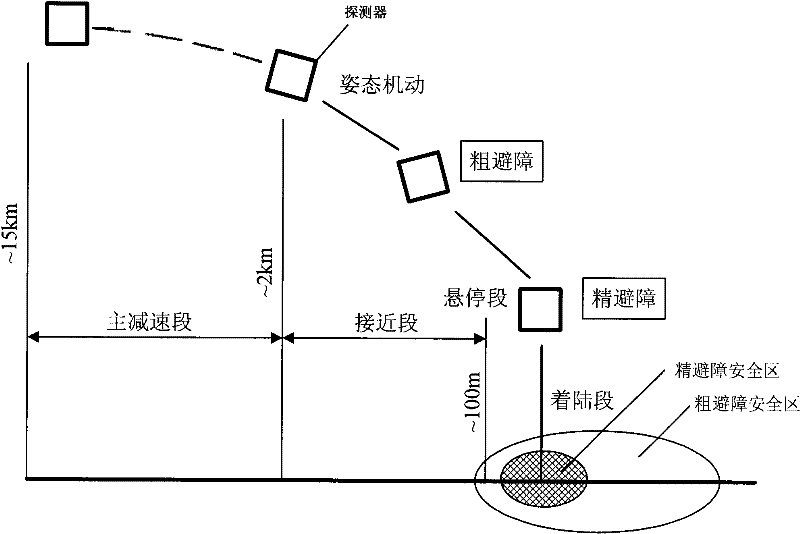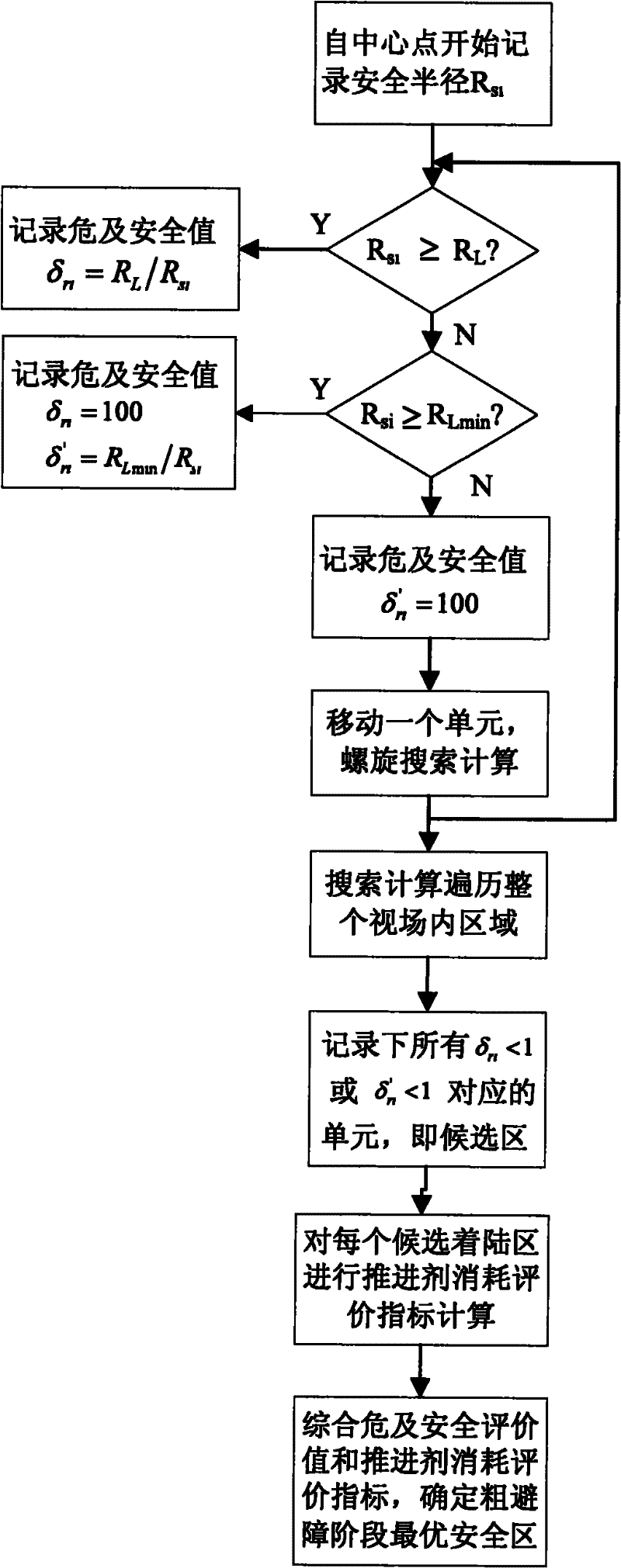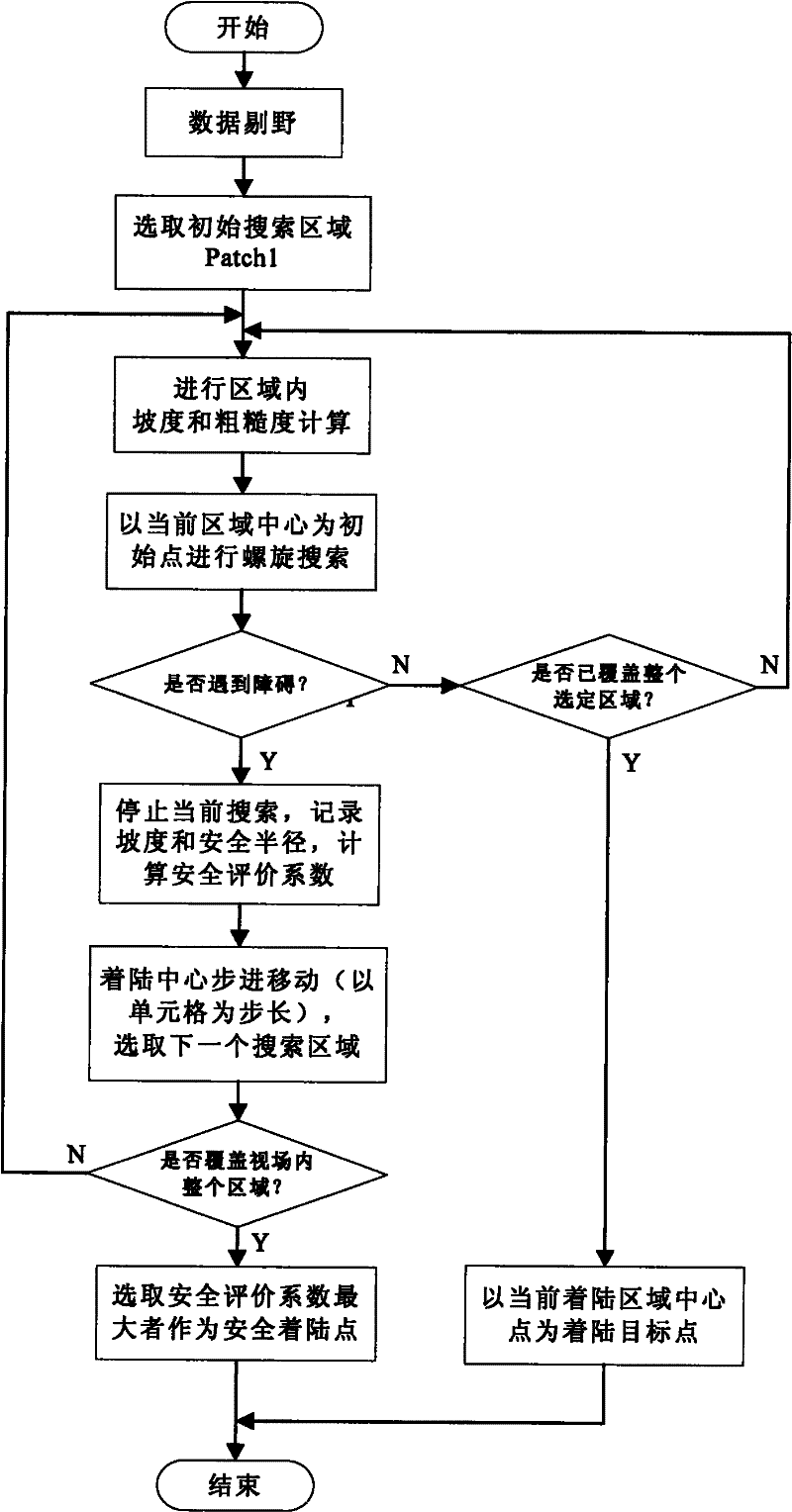Soft landing relay obstacle avoiding method
A technology of obstacle avoidance and rough obstacle avoidance, which is applied to the landing device of aerospace vehicles, the system of spacecraft returning to the earth's atmosphere, etc., can solve the problems of large reliability restrictions and discounts, achieve good autonomy and increase safety , the effect of reducing the difficulty of development
- Summary
- Abstract
- Description
- Claims
- Application Information
AI Technical Summary
Problems solved by technology
Method used
Image
Examples
Embodiment Construction
[0034] The basic idea of the present invention is to perform two obstacle detections during the soft landing process according to the characteristics of the current imaging sensor: in the coarse obstacle avoidance stage, the visible light imaging sensor is used to perform coarse detection of a larger range and larger obstacles, and to eliminate direct threats to the landing Large obstacles for safety; then, in the optimal safety zone selected in the rough obstacle avoidance stage, the laser three-dimensional imaging sensor is used to perform accurate three-dimensional obstacle detection on the surface of the celestial body, and eliminate smaller-sized obstacles to ensure landing safety to the greatest extent.
[0035] The technical solution adopted in the present invention realizes steps as follows:
[0036] (1) Planning a soft landing trajectory and designing a relay obstacle avoidance strategy
[0037] When the detector is far away from the surface of the celestial body, b...
PUM
 Login to View More
Login to View More Abstract
Description
Claims
Application Information
 Login to View More
Login to View More - R&D
- Intellectual Property
- Life Sciences
- Materials
- Tech Scout
- Unparalleled Data Quality
- Higher Quality Content
- 60% Fewer Hallucinations
Browse by: Latest US Patents, China's latest patents, Technical Efficacy Thesaurus, Application Domain, Technology Topic, Popular Technical Reports.
© 2025 PatSnap. All rights reserved.Legal|Privacy policy|Modern Slavery Act Transparency Statement|Sitemap|About US| Contact US: help@patsnap.com



